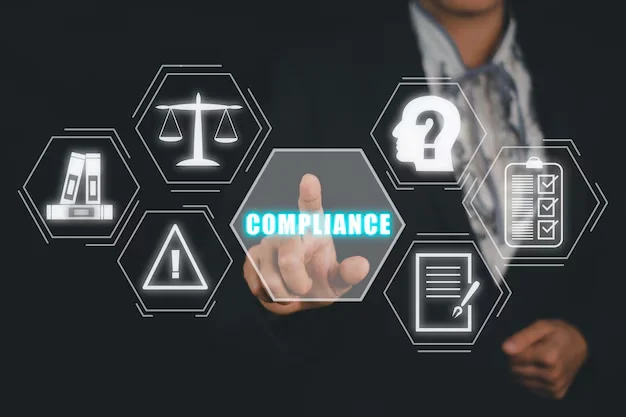When consumers face disputes with financial institutions, insurance providers, or service companies, knowing how to resolve the issue effectively is crucial. Most organizations offer several pathways for complaints, but the process can seem confusing. Should you start with internal escalation, approach an OmbudService, or file a regulatory complaint?
Each option serves a different purpose, involves different procedures, and may lead to different outcomes. This blog will break down the differences so you can better understand which route might work best for your situation.
What is Internal Escalation?
Internal escalation is the first step in addressing a complaint. It means taking your issue directly to the company or institution you are dissatisfied with and following its internal complaint-handling process.
Most companies—especially in sectors like banking, telecommunications, and insurance—have structured complaint resolution systems. These often involve multiple levels of review, starting with customer service and moving up to supervisors, managers, or specialized complaint-handling teams.
How Internal Escalation Works
- Submit your complaint through the company’s official channels (phone, email, web portal, or in writing).
- Provide details about your concern, including account numbers, dates, and supporting documents.
- Escalate further if the initial response is unsatisfactory—companies usually allow you to request review by a higher authority.
Pros of Internal Escalation
- Usually the fastest way to resolve complaints.
- Keeps the matter private between you and the company.
- Less formal and often less stressful.
Cons of Internal Escalation
- Resolution depends on the company’s willingness and policies.
- May result in delays or repeated back-and-forth.
- If unsatisfied, you may still need to take the issue externally.
What is an OmbudService?
An OmbudService (or Ombudsman) is an independent, impartial office that investigates complaints between consumers and organizations. In many industries, such as insurance or banking, OmbudServices are designed to provide free or low-cost alternatives to court.
The OmbudService listens to both sides, reviews evidence, and makes recommendations. While OmbudService decisions may not always be legally binding, companies usually agree to abide by them in practice.
How OmbudService Works
- File your complaint after exhausting the company’s internal escalation process.
- The OmbudService reviews your case by gathering information from both you and the organization.
- They provide a recommendation or resolution, which may include financial compensation or corrective action.
Pros of OmbudService
- Independent and impartial.
- Accessible and usually free for consumers.
- Less formal than legal or regulatory processes.
- Often quicker than pursuing court action.
Cons of OmbudService
- Decisions may not always be binding on the company.
- Limited to certain industries (e.g., finance, insurance).
- May not address systemic issues that affect broader markets.
What is a Regulatory Complaint?
A regulatory complaint involves taking your issue to a government regulator or oversight body. Regulators are responsible for enforcing industry rules, consumer protection laws, and ethical business practices. Filing a complaint with a regulator is more formal and typically used when internal escalation or OmbudService has failed, or when the issue involves serious misconduct.
How Regulatory Complaints Work
- Identify the regulator responsible for overseeing the industry (e.g., financial regulators, telecommunications commissions, consumer protection authorities).
- Submit a formal complaint with supporting evidence.
- The regulator may investigate, request information from the company, and determine whether laws or regulations have been breached.
Possible Outcomes
- Regulatory fines or sanctions against the company.
- Orders for companies to correct practices.
- In some cases, restitution or compensation for consumers.
Pros of Regulatory Complaints
- Strong enforcement power—companies must comply with regulators.
- Can address broader systemic or industry-wide issues.
- May lead to stricter consumer protections in the future.
Cons of Regulatory Complaints
- Often a slower process compared to internal escalation or OmbudService.
- Regulators focus on compliance, not necessarily individual compensation.
- Requires more formal documentation and evidence.
Key Differences: Internal Escalation vs. OmbudService vs. Regulatory Complaint
| Aspect | Internal Escalation | OmbudService | Regulatory Complaint |
| Who handles it? | The company itself | Independent Ombudsman | Government regulator |
| Cost to consumer | Free | Free or low-cost | Free |
| Formality | Informal | Semi-formal | Formal |
| Binding decision? | No | Usually not legally binding | Yes (enforceable by law) |
| Best for | Quick resolution | Impartial review | Serious or systemic violations |
Which Option Should You Choose?
- Start with internal escalation: Always begin with the company’s own complaint-handling process. Many issues can be resolved at this level.
- Move to OmbudService if unsatisfied: If the internal process fails, an OmbudService provides an impartial review without the formality of regulators or courts.
- Escalate to regulators for serious cases: If the issue involves unlawful practices, industry-wide misconduct, or repeated non-compliance, a regulatory complaint may be the best choice.
Conclusion
When dealing with disputes, consumers have multiple avenues to seek justice—internal escalation, OmbudService, and regulatory complaints. Each serves a unique role: internal processes aim for fast resolution, OmbudServices provide independent review, and regulators enforce industry-wide compliance.
Understanding the differences helps you choose the most effective route, save time, and protect your rights. Whether you’re a consumer facing unfair treatment or a business seeking to strengthen complaint-handling systems, knowing these options ensures fairer, more transparent outcomes.




